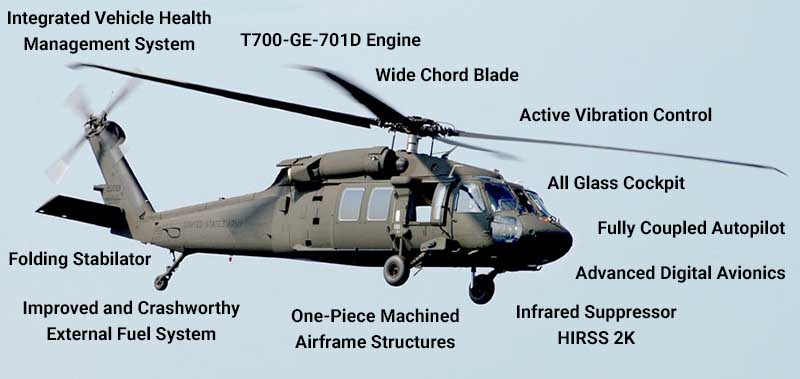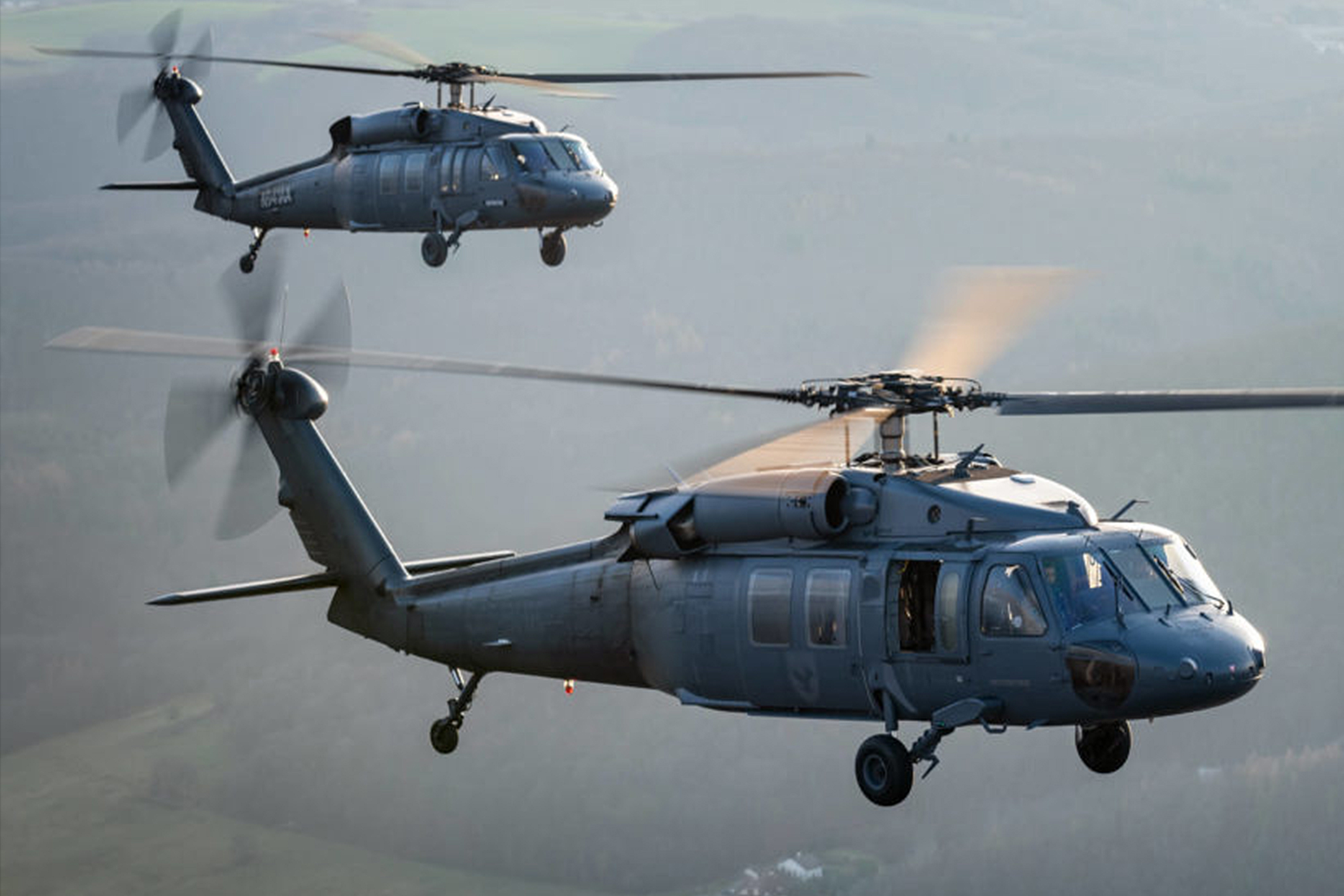Why the UH 60 Remains One of the Most Dependable Helicopters in Service Today
Why the UH 60 Remains One of the Most Dependable Helicopters in Service Today
Blog Article
Learn More About the Flexibility of the UH-60 Airplane
The UH-60 airplane stands as a testament to engineering quality, demonstrating impressive flexibility across a spectrum of altruistic and armed forces procedures. Its style enables seamless shifts between multiple duties, from army transport to medical evacuation, all while equipped with innovative modern technology for ideal performance in challenging settings. As we discover the historical context of the UH-60 and its developing applications, it becomes clear that its value expands far beyond typical roles, triggering a closer exam of its future capacity in modern aeronautics and protection techniques. What lies in advance for this renowned airplane?
History of the UH-60
The UH-60 Black Hawk helicopter has a storied background that reflects improvements in military air travel and the advancing needs of the united state Military. Established in the late 1960s by Sikorsky Airplane, the Black Hawk was designed to change the older UH-1 Iroquois, commonly known as the "Huey." The helicopter made its initial flight in 1974 and was formally introduced into service in 1979.
The Black Hawk was developed to satisfy the Army's requirements for a tactical transport helicopter efficient in carrying troops and supplies in a range of functional settings. Its style highlighted durability, rate, and maneuverability, making it appropriate for a large range of objectives. The helicopter's advanced rotor system and avionics significantly enhance its efficiency contrasted to its precursors, enabling it to operate properly in damaging climate condition and at high altitudes.
Over the years, the UH-60 has undertaken countless upgrades and adjustments, ensuring its relevance in modern-day warfare. Consequently, it has actually come to be a sign of flexibility and reliability, offering in different capacities, consisting of medevac, logistics, and unique procedures, both domestically and globally.
Military Applications
Identified for its versatility, the UH-60 Black Hawk serves a multitude of army applications that extend much beyond its original style as a tactical transport helicopter. Its durable airframe and advanced avionics make it an important asset in different operational duties.
One of the key military applications of the UH-60 is its usage in troop transportation, with the ability of lugging as much as 11 soldiers or a mix of personnel and freight. This flexibility is better improved by its capacity to carry out clinical evacuation goals, enabling quick response to combat zone injuries with onboard medical workers and equipment.
The UH-60 likewise plays a crucial duty in reconnaissance and surveillance procedures, equipped with advanced sensing units that provide real-time knowledge. Its capacity to operate in diverse settings, including unfavorable climate condition and at evening, boosts its efficiency in missions needing stealth and accuracy.

Altruist Missions

In recent times, the UH-60 Black Hawk has shown vital in altruistic goals, showcasing its capability to deliver aid and support in dilemma circumstances. Its adaptability permits for quick release in varied settings, whether responding to all-natural calamities, condition outbreaks, or conflicts that displace populaces.
The Black Hawk's ability to transfer workers, medical materials, and food is essential in emergency situation action circumstances. With its sophisticated navigating systems and robust design, it can operate in challenging conditions, including adverse weather and rugged terrain, ensuring that help gets to those in requirement without delay.
In addition, the airplane's capacity to perform aerial evacuations helps with the swift elimination of hurt individuals from inaccessible areas, dramatically enhancing survival rates in emergency situations. This ability has been shown in numerous operations, from earthquake alleviation efforts to flooding rescues.
Additionally, the UH-60 functions as a platform for coordination amongst several agencies, boosting overall effectiveness in altruistic operations. Its flexibility and dependability make it a cornerstone in global relief initiatives, strengthening the importance of army assets in international altruistic reactions. Overall, the UH-60 Black Hawk stands as a crucial tool in resolving urgent human demands.
Technological Innovations
Many technological advancements have improved the capabilities of the UH-60 Black Hawk, making it a premier system for armed forces and humanitarian operations. One considerable development is the assimilation of sophisticated avionics, which includes electronic flight controls and enhanced situational understanding systems. These modern technologies enhance pilot efficiency and goal performance, allowing for safer navigating in intricate settings.
The aircraft's robust communication systems enable real-time information sharing amongst systems, improving sychronisation during goals. Additionally, the incorporation of composite materials in the airframe reduces weight while enhancing sturdiness, causing boosted fuel effectiveness and haul ability.
The UH-60 also features advanced rotor systems that offer remarkable lift and maneuverability, allowing it to run in varied problems, consisting of high altitudes and extreme temperatures. In addition, the incorporation of modern-day sensing unit modern technology enables boosted reconnaissance and target recognition, making the airplane functional in combat and non-combat situations.
Last but not least, the ability for modular objective equipment installation ensures that the UH-60 can be rapidly adjusted to satisfy certain functional needs, enhancing its duty as an essential device for armed forces and humanitarian initiatives alike. These developments collectively strengthen the UH-60 Black Hawk's track record as a cutting edge aircraft.
Future of the UH-60

Future models of the UH-60 will likely include advanced materials and designs that improve sturdiness while browse around this site minimizing weight, boosting efficiency and gas performance. The assimilation of fabricated intelligence and artificial intelligence will help with improved situational awareness and decision-making capabilities, ultimately enhancing mission success rates. Moreover, recurring upgrades to interaction systems will certainly make certain smooth interoperability with various other platforms and allied forces.
With the increasing focus on multi-domain procedures, the UH-60's convenience will certainly allow it to support a variety of objectives, from troop transportation to medical evacuation and reconnaissance. Additionally, the potential for unmanned variants or boosted automation can important link additionally broaden its operational capabilities.

Final Thought
The UH-60 aircraft demonstrates exceptional versatility throughout different functional contexts, solidifying its duty in armed forces and humanitarian initiatives. UH 60. Its versatility to multiple goals, integrated with advanced technical innovations, makes certain ideal performance in varied environments. As the needs of modern war and situation reaction develop, the ongoing advancement of the UH-60 will be critical. This airplane's enduring relevance in military air travel underscores its crucial contribution to critical defense and emergency situation operations.
The UH-60 airplane stands as a testimony to design quality, demonstrating amazing adaptability throughout a range of altruistic and army procedures.The UH-60 Black Hawk helicopter has a fabled history that reflects developments in click for source armed forces air travel and the progressing demands of the United state Military. On the whole, the UH-60 Black Hawk stands as an essential device in addressing immediate human needs.
Numerous technological innovations have enhanced the capabilities of the UH-60 Black Hawk, making it a premier platform for military and humanitarian operations.The UH-60 airplane shows exceptional flexibility across different operational contexts, solidifying its role in altruistic and armed forces efforts.
Report this page